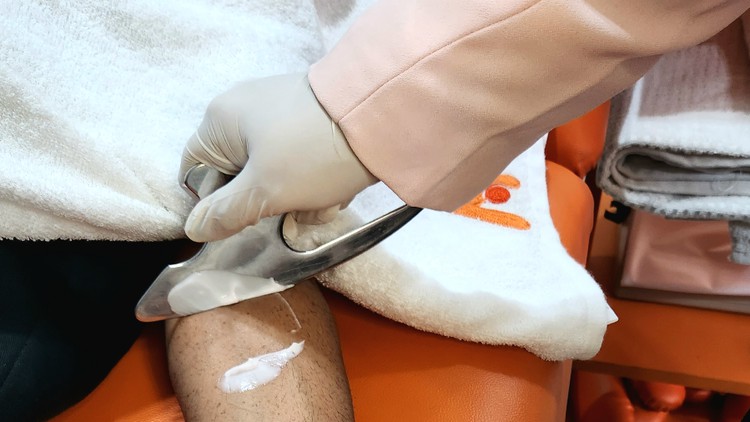
Learn the most effective technique for Myofascial release from the expert.
What you will learn
Participants should be able to explain the basic concepts behind IASTM, including the tools used, the benefits of the technique, and the types of conditions.
The course enables to identify and describe the different IASTM tools available, including their edges, curvature and surfaces.
Participants should be able to explain the safety considerations that need to be taken when performing IASTM, including patient positioning, and tool selection.
Students should be able to perform more advanced IASTM techniques, such as cross-friction, myofascial release, and trigger point therapy.
Participants should be able to explain how IASTM can be integrated with other massage techniques, such as deep tissue massage, and sports massage.
Description
IASTM (Instrument Assisted Soft Tissue Mobilization) is a manual therapy technique that involves the use of specialized tools to mobilize soft tissues, including muscles, tendons, and fascia. IASTM is commonly used by healthcare professionals, such as physical therapists, occupational therapists, chiropractors, and massage therapists, to treat a variety of musculoskeletal conditions.
IASTM courses may provide an in-depth exploration of the theory, principles, and practice of this technique. Some of the topics that may be covered in a typical IASTM course include:
- Anatomy and Physiology: A comprehensive understanding of the anatomy and physiology of the soft tissues and related structures, including muscles, tendons, ligaments, fascia, and nerves. This section may include a review of the different types of soft tissue injuries and their mechanisms of injury.
- Indications and Contraindications: An overview of the indications and contraindications for IASTM, including the specific conditions and injuries that may benefit or be adversely affected by this technique. This section may also cover the precautions and safety considerations related to IASTM.
- Assessment and Treatment Planning: A detailed exploration of the assessment process in IASTM, including how to conduct a thorough examination of the patient’s condition and develop a treatment plan based on the findings. This section may also cover the different types of IASTM tools and their applications.
- Techniques and Protocols: A comprehensive overview of the different IASTM techniques and protocols used to mobilize soft tissues. This section may cover the techniques for different areas of the body, including the upper and lower extremities, back, and neck.
- Practice and Mastery: A practical section that may provide opportunities for participants to practice IASTM techniques under the guidance of an experienced instructor. This section may include hands-on exercises, case studies, and discussions.
- Integration and Application: A discussion of the integration and application of IASTM into clinical practice, including the development of treatment plans and the evaluation of treatment outcomes.
Content
